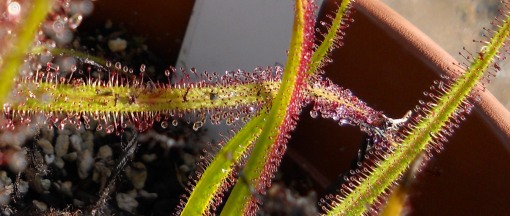
Cold weather keeps gardening chores indoors. A recently acquired, but neglected moth or Phalaenopsis orchid came my way and needed some attention. I had another one on the window sill in need or repotting and set to the task. Moth orchids can outgrow their pots in about a year’s time as their wandering roots reach outside and above the edge of the containers. In their natural environment, they grow high in the trees, above the soil, taking all of their nutrients from the humid, tropical air, rain and debris which may land around the plant. This manner of growing is called epiphytic. Leaves grow from a center grouping, sending roots out from just below leaf axis.
Mature plants usually flower late winter into spring. Flower show can last for several months. Repotting is best right after flowering. New orchids are often sold with roots packed in sphagnum moss to keep them moist during the shipping and retail portion of their life. Once home, moss and any plastic packing and pots should be carefully removed. Orchid roots like air and will rot if keep soggy and wet.
After removing moss.
Cut back any dead or rotted roots.

After cutting back dead roots in moss.

Neglected roots cut back.
Phalaenopsis orchids prefer a porous pot such as terracotta which provides plenty of air. Some decorative orchid pots have holes designed in the sides for the roots to access more air. Water these plants and pots over the sink as water will readily run out.
Use specially formulated orchid bark mix for potting. The mix should contain bark, perlite and horticultural charcoal. Old bark deteriorates over about a two year period, and should be refreshed annually by repotting to keep the plants strong.
Fill the pots half full of bark mix, then set the trimmed root ball onto the bark, spreading out the roots carefully. Insert a plant stake or chopstick through the bark mix, next to the plant to help anchor the orchid.

Half filled with bark mix.
Gently add more bark mix over the roots to within one half inch of the top edge of the pot. Fill a large cooking pot or bowl with tepid water. Immerse the entire pot containing the bark and plant into the water to soak the bark for about 20 minutes. Then lift the terracotta pot containing the plant out of the water and let is drain in the sink. If settling occurs, add more bark. Orchids should never completely dry out. Keep the bark moist by soaking weekly, or water just the bark from above. Holes in pots are a must for good drainage.
Moth orchid should be placed in bright light, preferably east window. A south or west window will need a sheer curtain or the plant moved back out of the directly rays of sun to avoid leaf scorch. In their wild home, they would be shaded by the tree canopy.
Orchids thrive in high humidity and temperatures around 75 degrees F with a slight drop at night. In the fall, reduced daylight and night temperatures of 55 degrees F will initiate flower bud formation. To provide more humidity, mist with clear water in the morning or set potted plant on a tray of pebbles and shallow water. The water will make a cone of evaporation surrounding the plant. Fertilize every two weeks with a balanced houseplant fertilizer during spring, summer and fall. Cut to half strength during the winter.

-Carol Quish



















